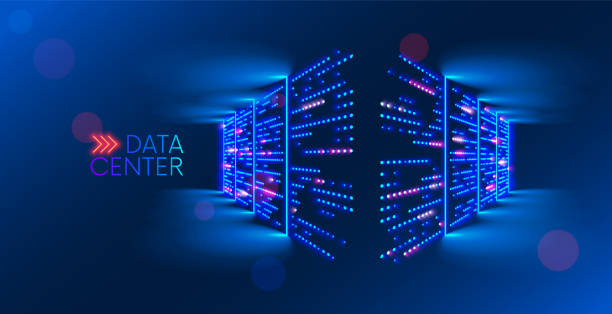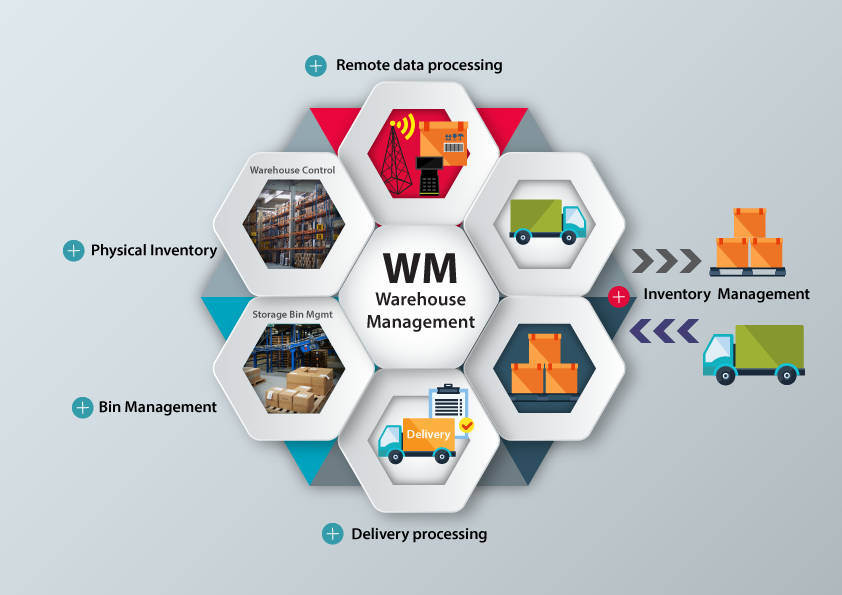Companies can use data center networking solutions to manage information flow between data centers and infrastructure assets. Software-defined data center networking systems manage the flow of data as well as the workloads of the computers that process it.
Data Center Networking Software makes it easier for connected components and internal and external networks to communicate and share information. These products are used by businesses to establish robust connections between data centers and the devices that are connected to them. To better control hardware components and optimize resource utilization, they frequently integrate with data center infrastructure management (DCIM) technologies. The data center networking market is estimated to reach $48.53 billion by 2028, growing at a compound annual growth rate of 11.72 percent from 2021 to 2028.
Key functionalities of data center networking software:
- Streamline data flow between data center facility components.
- Connect information from data centers to cloud computing platforms or external networks.
- Allow users to control their networking needs.
Table of Contents
What should users look for in Data Center Networking Software?

The most powerful data center networking platforms connect and secure everything in an organization’s environment, adapting dynamically to users’ and applications’ changing needs. They provide crucial services for apps and data, including automation, consistent operations, and micro-segmented security.
- Automation
Automated provisioning of networking services for applications is critical to achieving speed and agility in modern data centers. Modern networking solutions, which are far faster and more dependable than a human administrator, not only determine the most efficient method to program a network, balance workloads, and automate time-consuming chores but they also adjust dynamically to changes in usage.
- Consistent policies
Consistent execution of policies is critical in modern data center networking, which is responsible for integrating resources from the edge to the cloud.
- Single pane of glass
Modern data center networking technologies, which typically connect resources on-premises, in the cloud, and at the edge, provide centralized management from a single console.
- Granular security
Integrated security measures, such as micro-segmentation and IDS/IPS, are common in today’s data center networking architectures.
- Global visibility
Most data center networking technologies can show a visual picture of the network and its interconnections, making it much easier to troubleshoot network issues.
How does Data Center Networking work?
All network services required to serve typical enterprise applications are run entirely in software on a modern data center networking platform, allowing for the automation of traditionally manual and error-prone provisioning procedures. Capacity planning, security policy design, and network troubleshooting are all feasible with it. When an application is retired, the networking platform manages the de-provisioning policies associated with that application, preventing the spread of stale rules that might otherwise compromise manageability, security, connectivity, and compliance.
Top 5 Data Center Networking Software
Extreme Networks
Extreme Networks, Inc. (EXTR) provides software-driven networking solutions that enable IT departments throughout the world to achieve the ultimate business goal: better connections with customers, partners, and workers.
Features
- Fabric-enabled
Extreme, a pioneer in fabric networking, offers a diverse range of Ethernet and IP fabric solutions. Fabric technologies offer a quicker, more flexible, and secure foundation for users’ organizations, whether they are transforming their campus, data center, metro, or WAN.
- Dynamic role-based policies
Across-wired and wireless devices, extreme Switches enable a shared, highly scalable policy system. These regulations are defined centrally but implemented locally at the switch. As the user, device, and application move through the network, these regulations follow them.
- Application hosting
Onboard programs can operate alongside the switch OS on Extreme Switches without affecting performance. This can help give network insight via onboard analytics programs, as well as enable new network applications without the use of a separate hardware device.
- Rich analytics/ AI/ML-driven insights
ExtremeAnalytics and rich application telemetry combine to give comprehensive network and application analytics. With ongoing integration into ExtremeCloud IQ, powerful AI/ML-based insights enable network fine-tuning before problems become service-impacting.
Universal platforms
By simply upgrading the software and reusing your existing hardware, you may avoid technology lock-in and move to new deployment patterns. Re-deploy your switches as needed to extend their life.
Pros
- A complete solution that is extremely dependable.
- Extreme Networks’ NM is a comprehensive solution that is compatible with the solutions of other companies.
- In extreme networks, solution design is also relatively simple.
- The tools supplied on the partner portal made solution sizing and network design quite simple; thus, earning this certificate was a breeze.
Cons
It’s a little pricier than comparable solutions.
Pricing
Extreme networks start from $345 for 10 devices. There are multiple prices available that can be opted for based on the users’ budget and requirements.
ManageEngine OpManager
ManageEngine OpManager is a comprehensive network management system that makes network management simple and efficient. It allows network/IT administrators to do numerous tasks at the same time, including network performance monitoring, bandwidth analysis, configuration management, firewall administration, storage monitoring, IP address management (IPAM), and switch port control (SPM).
On OpManager, an organization’s whole network infrastructure may be examined through a highly customized dashboard. You can keep your network up and operating 24 hours a day, 7 days a week, thanks to automated processes, sophisticated alerting engines, adjustable discovery criteria, and easy dashboards. Many organization-specific Network administration duties can be eased with OpManager’s many contextual connectors with other products.
Features
- User-friendly
OpManager’s user-friendly interface makes network monitoring simple and straightforward, with intuitive dials and graphs that can be customized to meet your specific needs.
- No third-party code
Manage Engine engineers created OpManager and its modules from the ground up.
- 24×5 technical support
OpManager provides technical assistance 24 hours a day, seven days a week, making it easier for users to get the most out of the software.
- Virtualization support
To provide optimal support in terms of monitoring your IT network, OpManager has significant built-in virtual server and device monitoring capabilities.
DPI (Deep Packet Inspection) support
Deep Packet Inspection (DPI) is the most accurate technique for monitoring application traffic, analyzing application delivery problems, and regulating traffic flow in the most efficient manner available in OpManager.
Pros
- It aids in the detection of server or system health issues within the enterprise.
- It’s simple to install on platforms.
- Alarms are triggered and generated.
Cons
- More features and services should be added to this tool.
- Monitoring notifications are not always generated.
- The map must be changed by the Op-Manager.
- They are taking longer to load on the internet.
Pricing
ManageEngine OpManager standard edition starts from $245 for 10 devices, Professional Edition starts from $245 for 10 devices, and Enterprise Edition starts from $11,545 for 250 devices. There are various price editions and features available that suit users’ budgets and requirements.
H3C
To tackle the emerging challenges of IT development, H3C has developed an integrated data center solution. The integrated data center solution allows high availability, high reliability, high performance, high scalability, and high manageability of IT systems, as well as automated scheduling and adaptiveness of services, by integrating networks, compute, and management.
Features
- Orchestration
The AD-DC system of H3C is deployed to provide a converged architecture and GUI-based basic network administration that enables unified, graphic, visualized orchestration across the whole network and consolidates management, control, and analytics on a single platform. It offers a complete end-to-end closed-loop solution that includes network architecture design, simulation, deployment, and operations in a single package.
- Automation
H3C implements the SeerEngine platform to automate network device integration, and service provisioning, as well as network cloud adaptation.
- Analytics
The SeerAnalyzer platform of H3C is used to provide AI and big data-assisted analytics, allowing administrators to get a holistic view of the network and swiftly discover and rectify network issues.
- Lossless fabrics
Builds lossless fabrics with ultra-broadband and ultra-low latency using H3C high-performance data center switches suited for the cloud computing age.
Pros
H3C includes options for configuring telnet, FTP/TFTP source IP address, and device management.
Cons
It’s a little challenging to use the H3C device for the first time.
Pricing
H3C is available for as little as $345 for ten devices. A number of price editions and features are available, depending on the user’s budget and interests.
HashiCorp Consul
HashiCorp Consul is a distributed service networking layer that may be used to connect, secure, and configure services on any runtime platform. With a service registry that preserves a real-time list of services, their location, and their health, Consul service discovery enables service-to-service communication in modern microservices infrastructures. Service discovery, service segmentation, routing, and network observability are all challenges that Consul service mesh addresses.
Features
- Service discovery
Consulate customers can register services such as API and MySQL, and other customers can use the consulate to find a provider. Using DNS or HTTP, applications may easily identify the services they require.
- Health checking
Consul clients can do a variety of health checks, whether for a specific service or the entire local node. This information is utilized by the service discovery components to divert traffic away from unhealthy hosts, and it can be used by an operator to monitor cluster health.
- KV store
Consul’s hierarchical key/value store can be used for a variety of applications, including dynamic configuration, feature flagging, coordination, and leader election. It’s straightforward to use thanks to the HTTP API.
- Secure service communication
To create mutual TLS connections, Consul can generate and distribute TLS certificates for services. One can use intents to specify services that can communicate with each other. Instead of employing complex network topologies and static firewall rules, service segmentation may be easily controlled with intentions that can be altered in real-time.
Multi data center
Consul comes pre-installed with support for various data centers. This eliminates the need for users of Consul to develop extra layers of abstraction in order to expand to multiple regions.
Pros
- In terms of SaaS products, Hasicorp accomplishes everything correctly, and the consul is following suit.
- This is one of, if not the greatest, service discovery software available.
- The key advantage of the consul is that it can be utilized in polyglot architectures that are not restricted to a single language.
Cons
- Although consul is the best for polyglot architectures, its Java SDK is a little difficult to grasp, and its auto-discovery isn’t quite as good as Eureka’s.
- For the consul, the user interface could have been a little better.
Pricing
Extreme networks start from $2500 per year. There are various price editions and features available that suit users’ budgets and requirements.
Arista Networks
With network architectures addressing private cloud, public cloud, hybrid cloud, enterprise, and high-performance network use cases, Arista Networks has championed the guiding cloud principles of cloud leaders. Open APIs, cloud automation tools, and self-service provisioning and deployment are just a few of them, along with an open approach to network connectivity, client programmability, and simplified standards-based deployment architectures.
Features
Arista network is a multi-feature platform. Following are the key tools offered by it:
- Application-specific integrated circuits (ASICs)
- Command-line interface (CLI)
- Simple Network Management Protocol (SNMP)
- Spanning Tree Protocol.
Pros
- Arista platforms are extremely sophisticated, and the self-healing feature is particularly appealing.
- The network administration and feature set are far superior to those offered by competing suppliers.
- Arista is the greatest ISP because of its excellent service. Link failures are extremely unusual. Rapid recovery on-call assistance is available and at a reasonable cost.
- Fabric is defined by software. Automated provisioning. SDN is also supported by wireless APs.
Cons
- Collaboration with other vendors.
- Wireless guest access is causing issues with handheld devices.
Pricing
Arista network standard edition starts from $345 for 10 devices. There are various price editions and features available that suit users’ budgets and requirements.
Conclusion
Conventional data centers have reached their expiry date. Advancements are now required to help its pace with the changing market. The proliferation of generic building blocks based on industry-standard components has changed the way businesses plan, construct, and operate. Companies now prefer cloud-based solutions for their on-premises infrastructure. These cloud-based solutions have re-defined the data management approach by making significant changes in operations and refresh cycles, resulting in a considerable increase in utility and performance. In this article, we discussed the top 5 platforms that offer reliable data networking services. If you are looking for a more tailored solution, kindly connect with us at SaaSworthy for assistance.






